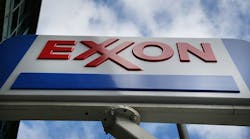ExxonMobil Plans $20 Billion in Manufacturing Investments in Gulf Region
ExxonMobil will invest $20 billion at 11 new and existing sites in the next 10 years to expand its manufacturing and export capacity along the Gulf of Mexico, the company announced March 6.
The expansion program, which ExxonMobil is calling “Growing the Gulf,” will involve chemical, refining, lubricant and liquefied natural gas projects at facilities along the Texas and Louisiana coasts. Investments began in 2013, ExxonMobil said, and are expected to continue through at least 2022.
“The United States is a leading producer of oil and natural gas, which is incentivizing U.S. manufacturing to invest and grow,” said Darren Woods, Exxon chairman and CEO, in a speech at the CERAWeek energy conference in Houston. “We are using new, abundant domestic energy supplies to provide products to the world at a competitive advantage resulting from lower costs and abundant raw materials. In this way, an upstream technology breakthrough has led to a downstream manufacturing renaissance.”
Woods emphasized that the projects, which he said involves "building a manufacturing powerhouse" along the U.S. Gulf Coast, will help the company increase its exports to “fast growing nations.”
“Overseas markets underpin our investment. The supply is here; the demand is there. We want to keep connecting those dots,” said Woods.
Woods said the projects could produce more than 45,000 jobs, and that many would be high-skilled jobs paying $100,000 per year. He added that those jobs also would have a multiplier effect, creating further jobs in the surrounding communities.
President Donald J. Trump praised the plan. ““This is exactly the kind of investment, economic development and job creation that will help put Americans back to work,” the president said. “Many of the products that will be manufactured here in the United States by American workers will be exported to other countries, improving our balance of trade. This is a true American success story.”
Calling it “great news,” NAM President and CEO Jay Timmons said “Manufacturers depend on affordable, accessible energy to power their operations and as a raw material. Without the expanded domestic energy production of recent years, an announcement like today’s wouldn’t be possible. Across the United States, manufacturers are being empowered to expand and grow because of access to affordable energy, and America’s energy industry is boosting manufacturing jobs in the United States.
Grow the Economy, Reduce Emissions
In his CERAWeek address, Woods stressed that growth in energy resources and the economy need not come at the expense of the environment.
“I want to challenge the assumption made by many that a growing economy and a cleaner environment are mutually exclusive, that as we step forward in developing more oil and natural gas, our environment, including our climate, must step back,” said Woods.
The ExxonMobil CEO said the company was investing in a variety of technologies that would make “a dream – growing the economy while reducing emissions – a reality.”
Woods noted that ExxonMobil has an interest in about one-fourth of the world’s carbon capture and storage capacity. Last year, he said, the company announced a technology partnership to explore whether carbonate fuel cells can be used to economically capture carbon dioxide at scale.
“By capturing CO2 in gas-fired power generation before it is emitted, this potential game-changer enables us to envision a future in which hydrocarbon use and de-carbonization go hand-in-hand,” Woods said.
Woods said ExxonMobil was also exploring the production of biodiesel from agricultural waste and working with Synthetic Genomics to develop biofuels from algae.
“This program draws upon scientists from ExxonMobil and SGI to engineer new strains of algae that could enable production, at scale, of this low-emissions fuel,” he told the CERAWeek audience.
In the manufacturing process area, said Woods, the company has developed “a new technology we call ‘cMIST’ that enables us to more efficiently dehydrate natural gas. cMIST reduces the surface footprint for this process by 70%. It also reduces energy use and emissions.”
Woods also noted research with Georgia Tech on a new membrane for the process of reverse osmosis that can convert oil and natural gas to higher-value fuels and chemicals. “If we can scale it, this breakthrough could reduce global carbon-dioxide emissions up to 45 million tons, annually,” he said.
At the company’s refineries and chemical plants, said Woods, ExxonMobil is deploying “new systems to recover gas that would otherwise be flared; specialized cameras to detect fugitive emissions so that they can be stopped; [and] advanced burners to minimize emissions….”
“These applied technologies are good for the environment, and they’re good for business,” Woods said.




